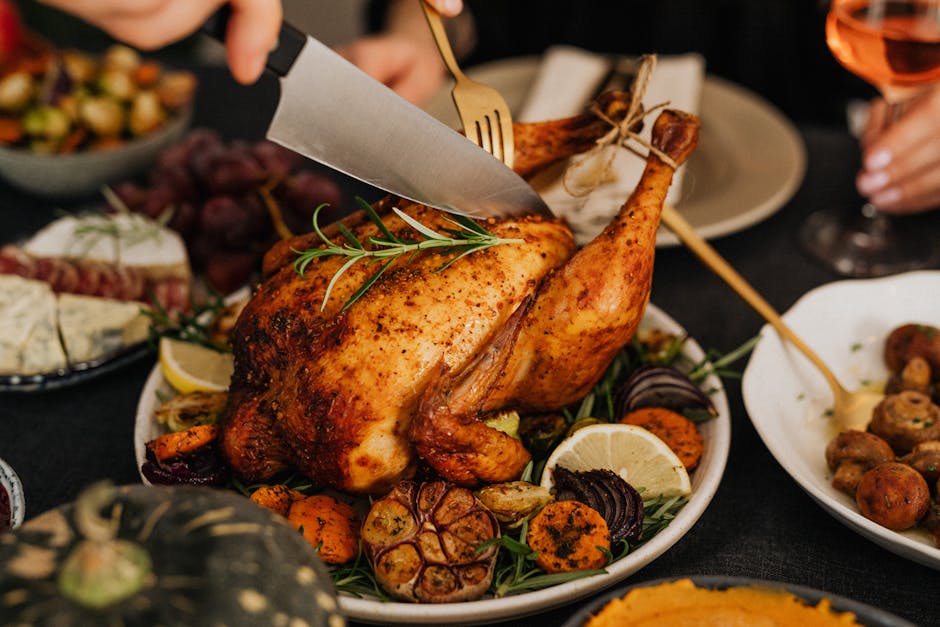Culinary Canines: Boost Pet Health and Training with Cooking Classes
Imagine this: your dog sitting obediently as they wait for their meal, eyes sparkling with anticipation. But what if I told you that the key to this well-mannered behavior could lie not just in conventional training methods but also in culinary creativity? That’s right! Culinary canines are on the rise, and cooking classes for pets can simultaneously enhance training and health in ways you may have never considered.
Cooking for your pet isn't merely a trendy endeavor; it represents a holistic approach to their health and well-being. In this article, we will explore how culinary classes for pets can enrich their training experience, promote better health, and help strengthen the bond between you and your furry friend.
The Intersection of Cuisine and Canine Training

Cooking classes tailored for pets focus on creating nutritional, wholesome meals that benefit your pet’s health while integrating training techniques. These classes encourage pet owners to think beyond basic feeding and instead see mealtime as an opportunity for training—a time to reinforce commands, promote good manners, and stimulate mental engagement.
The Benefits of Home-Cooked Meals for Pets

The first question many pet owners have is, "Why should I cook for my pet?" Home-cooked meals provide an array of benefits that pre-packaged food often cannot match:
-
Nutritional Control: By preparing your dog's meals, you control the ingredients, ensuring a balanced diet that addresses their specific health needs. For instance, lean proteins, fibrous vegetables, and healthy fats can be combined to create a dish that not only tastes great but also fuels your pet’s body.
-
Enhanced Taste and Appeal: Cooking for your pet adds variety to their diet, promoting a more appetizing experience. Many dogs can be picky eaters, and home-cooked meals often entice them to eat more willingly and without fuss.
-
Strengthening the Human-Animal Bond: Engaging with your pet in the kitchen fosters companionship. This real-time interaction allows for training and developing new skills, all while you whip up a delicious meal.
Cooking classes offer a structured way to navigate this process. With an expert guiding you, you learn the dos and don'ts of preparing dog-friendly meals. As you speculate about flavors and combinations, you will also discover how to integrate simple commands like "sit," "stay," and "leave it" into the cooking process.
For those looking for innovative training methods, you might find inspiration in our article on tech-savvy training techniques, showcasing how technology can complement these culinary endeavors.
The Role of Culinary Classes in Training

Cooking classes for pets merge traditional training with culinary arts, providing various tools and techniques that enhance behavior and health simultaneously. Here’s how:
-
Behavioral Reinforcement: Using meal prep as a time for training allows you to reward good behavior instantly. A well-timed treat or praise after following a command fosters a positive association with the task at hand.
-
Self-Control and Patience: As your pet learns to wait without barking or jumping when food is being prepared, they develop valuable patience skills. This command can prove especially beneficial in various situations outside the home.
-
Focus and Engagement: Cooking creates an engaging environment that draws your pet's focus. By incorporating tricks and commands into the experience, you introduce an element of fun that can transform mundane behavior into exciting learning opportunities.
In addition, you’ll find that culinary classes explore elements of your pet’s psychology. Cooking with your pet can be a comprehensive education on your furry friend’s tastes while reinforcing their training.
Utilizing the psychology of color in your pet's food can also work wonders. Different colors appeal to animals in distinct ways. Red meat and bright veggies can create more enthusiastic responses. You can further explore this fascinating subject in our piece on color psychology and training.
Healthier Pet, Happier Life

Cooking classes not only present an opportunity to bond with your pet; they can also help promote a healthier lifestyle for your furry friend. Here’s how:
Managing Weight and Nutritional Needs

Overweight pets are increasingly common, leading to a range of health issues like diabetes, joint problems, and decreased quality of life. Cooking allows you to portion meals correctly, reducing the chances of overfeeding.
Additionally, culinary classes can educate you on substituting ingredients while introducing fresh produce and lean proteins into your pet's diet. This is especially crucial for pets with allergies or specific dietary requirements. Knowing how to cater to these needs while still making mealtime enjoyable is key.
Preventing Health Issues

Incorporating home-cooked meals means you can steer clear of preservatives and fillers that often plague commercial dog food. By selecting whole, nutritious ingredients, you help prevent common ailments like obesity, allergies, and gastrointestinal issues.
Moreover, certain ingredients—like omega-3 fatty acids from fish or antioxidants from fruits and vegetables—can help improve your dog’s coat, boost their immune system, and increase their overall vitality.
You may also simply want to know how these culinary classes fit into your daily routine. Many find that the time spent preparing meals and the knowledge gained about their pet's nutritional needs can provide a strong sense of achievement and satisfaction.
Explore our article, Creating a sensory garden, as a fun, alternative way to ensure your pet gets the necessary nutrients through imaginative meal preparation!
Engaging Mental Stimuli

Incorporating cooking into your routine becomes an enriching mental exercise for your dog. By training your pet to perform tasks or tricks associated with meal prep—perhaps "helping" gather ingredients or even measuring out portions—you ignite their mental faculties. This leads to improved cognitive function, reducing boredom and destructive behavior.
The Social Aspect: Creating Community through Pet Culinary Classes

Cooking classes for pets offer significant social opportunities for both you and your canine. Not only can you meet like-minded trends in sustainable and healthy living, but you can also connect with fellow pet owners looking to improve their pet’s health and wellbeing.
Join community cooking classes that promote local, sustainable food sources. Exchange culinary tips and ideas, share training methods, and support each other in creating pet-friendly recipes that enrich the lives of both pets and their people.
You can discover more about engaging with other pet owners in our article, Involving your pet in family decisions, to create better relationships with both your furry friend and those around you.
Building a Support Network

You’ll find that, with group settings, everyone learns and grows—both as individuals and as a community. Share recipes, discuss challenges, and celebrate your journeys together. This communal aspect can be especially comforting to new pet owners navigating the world of training, feeding, and bonding with their dogs.
Sharing Success Stories
Whether your pet's culinary expertise leads to a more disciplined demeanor or improved health, there’s nothing better than sharing success stories with others. It empowers and motivates fellow pet owners, encouraging them to embrace this unique training method and explore its benefits for themselves.
Implementing the Culinary Skills at Home
Culinary classes provide the foundation, but the real transformation occurs at home. Here are some quick steps to integrate what you've learned into your pet’s daily routine:
-
Choose Recipes: Start simple! Select easy recipes that incorporate your pet's favorite ingredients. Monitor the ingredients for allergies or dietary restrictions, and don't hesitate to experiment.
-
Incorporate Training: Introduce new commands during meal prep. Whether training your pet to fetch items, bringing ingredients to you, or simply waiting patiently for their meal, reinforce these commands with positive reinforcement.
-
Serve with Love: As you present meals, offer encouragement and a warm tone. This helps your pet develop positive associations with both the meal duration and the commands you've taught.
-
Track Progress: Monitor your pet’s behavior and health progress over time. Engage with community forums or social media groups to share findings, ask questions, and gather tips from others on similar paths.
-
Keep Learning: Cooking and training are journeys without distinct endpoints. Remain open to further training, new recipes, and innovative techniques that can emerge from culinary classes or pet community interactions.
By integrating these techniques, cooking classes provide long-lasting value for your pet’s training as well as their well-being.
Final Thoughts
Culinary classes for pets open up an exciting avenue for pet training, merging health and behavior in ways that traditional training methods may overlook. Engaging culinary experiences allow you to bond with your furry friend, tailor their dietary needs, and master useful training methods all at once.
Whether you enroll in a local cooking class or experiment with new recipes at home, your culinary journey can elevate not just your pet's health but their learning and behavior, too. Let pets and cooking become partners in a fulfilling adventure, and you'll create a happy, healthy existence for you both.
As you set out to improve your pet's quality of life through home-cooked meals and innovative training techniques, remember that every little effort adds up. Embrace the experience and the connection you can develop with your furry companion; it will bring joy to both your lives!



